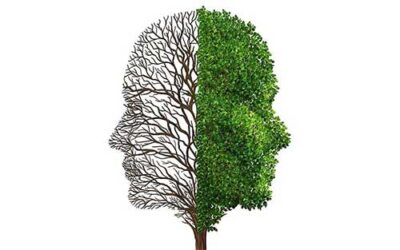 COVID-19 may have stretched the best of us as educators but we have remained flexible and discovered ways to make the best out of the situation. This pandemic taught us that it’s possible to adapt to new learning environments and still connect with our students. However, even with our resilience, we mustn’t forget that our students were in some ways negatively affected by the sudden changes.
COVID-19 may have stretched the best of us as educators but we have remained flexible and discovered ways to make the best out of the situation. This pandemic taught us that it’s possible to adapt to new learning environments and still connect with our students. However, even with our resilience, we mustn’t forget that our students were in some ways negatively affected by the sudden changes.
In addition to dealing with growing pains and understanding themselves, they have new mountains to climb.
This is the part of life that they didn’t see coming, and as a result, had to adjust to digital learning since schools were closed indefinitely. Their social interactions were cut short and they didn’t have the liberty to physically move around – as they should.
The glaring consequences of remote learning are evident in the findings of a survey conducted of 3,300 young adults between ages 13 and 19, by America’s Promise Alliance. It showed that:
- More than 1 in 4 adolescents had elevated feelings of worry, unhappiness, stress, depression, loss of confidence, and insomnia.
- More than half of the teenagers were more anxious than usual about their current and future education – their grades, and college admissions.
- A large percentage of students said that their school didn’t provide helpful resources and tools to support their social and emotional well-being during the pandemic.
The need for Social Emotional Learning (SEL) is paramount – now, more than ever before. Teachers should be on the frontline championing the holistic wellness of young adults. If we fail to invest now, we will continue to experience a rise in mental health issues in teenagers.
The World Health Organization reports that:
- Depression is the leading cause of illness and disability in adolescents globally.
- Suicide is the 4th leading cause of death for teenagers.
- Half of mental illnesses start at age 14 and most cases are undetected.
Psychologist Peter Gray rightly put it that today’s children suffer depression and anxiety way more than children in the Great Depression or the Cold War. That should tell you that it might get worse. However it doesn’t have to. By integrating Social Emotional Learning with a systemic approach we can help our students improve their mental health.
What is Social Emotional Learning (SEL)?
The Collaborative for Academic, Social, and Emotional Learning (CASEL) defines SEL
as the process through which all young people and adults acquire and apply knowledge, skills, and attitudes to develop healthy identities, manage emotions and achieve personal and collective goals, feel and show empathy for others, establish and maintain supportive relationships and make responsible and caring decisions.
The benefits of SEL for students
- Improved management of moods, feelings, and emotions. SEL makes them aware of their own emotions and those of others thus increasing their empathy levels. They are more cognizant of how different situations and people make them feel and how they can handle them appropriately. When they learn emotional management, they are less likely to indulge in destructive coping mechanisms.
- An easier time coping with challenges. SEL builds resilience in young adults. They go through life knowing they can handle any hurdles they encounter because they have the right problem-solving tools. This means they don’t give up easily and develop the necessary skills to prepare for the life that awaits them.
- All-rounded success in school and life. A happy and healthy child learns better. SEL has a major impact on a students’ academic success as they can focus on their studies and do their best in an environment that encourages all the tenets of their wellness; social, emotional, physical, intellectual, and social well-being. This approach to learning influences life outside the classroom and helps them build confidence.
- Better and healthier relationships. SEL makes a child a better student, friend, neighbor, sibling, and citizen. They are equipped to foster rewarding relationships with themselves and others whose foundations are built on cooperation, empathy, and respect. SEL also aids them with proper conflict-management skills, collaboration skills, and help-seeking abilities.
- Goal-setting. SEL promotes self-management where students take control of their personal and academic goals; they monitor their growth and trajectory towards what they’re aiming for. This imparts a sense of responsibility and care for their future. They are well-grounded with a sense of purpose and direction in life.
More benefits to discover here
SEL is the lighthouse we all need to shine on our families, schools, and communities, especially during stormy times. This light allows children to thrive, teachers to navigate effortlessly and society to becomes a better place.






